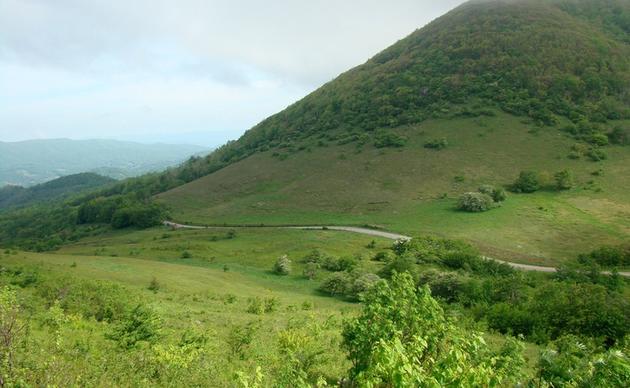Putting Working Lands to Work for Birds and People
Audubon has crafted a collaborative approach to forest management to restore habitats for birds and wildlife in Western North Carolina. By developing partnerships, training opportunities, management plans and demonstration sites, a conservation initiative, Putting Working Lands to Work for Birds and People, is providing landowners with the tools to enhance their property in cost-effective ways while supporting struggling populations of priority bird species.
Working with private landowners is a critical piece of the efforts to restore forest habitat for birds:
- 61% of North Carolina's 18.4 million acres of forestland is privately owned.
- 90% of that acreage is contained in parcels of less than 50 acres.
- 20% of the total acreage of North Carolina's Important Bird Areas are comprised of private lands.
Through this initiative, Audubon is collaborating with federal and state organizations that manage lands and provide funding to private landowners to support environmentally sound practices, especially those that benefit birds. We have plans to expand the program across North Carolina, focusing most intensively on blocks of forest where we will have the greatest impact on songbird populations now and in the future.
Audubon North Carolina’s western region staff is reaching out to private landowners to help them develop cost-effective strategies for making their properties more bird-friendly. They are meeting with landowners, assessing their property and its birdlife, and writing management plans that provide strategies for maintaining or restoring bird-friendly habitats, as well as suggesting sources of funding and tax incentives for management activities.
Accomplishments To Date
Since launching the Working Lands conservation strategy, Audubon North Carolina has made the following achievements:
- We are working with a number of local and regional land trusts to provide management advice and technical assistance to properties protected by conservation easements. We have worked with the National Committee for the New River, Blue Ridge Conservancy, Southern Appalachian Highlands Conservancy, Land Trust for the Little Tennessee, The Nature Conservancy and Conservation Trust for North Carolina to impact 6,000 acres.
- In partnership with the Natural Resources Conservation Service (NRCS) and others, we are partnering with 30 landowners that manage a total of 500 acres for the benefit of Golden-winged Warblers. The landowners are already enrolled in NRCS tax incentive programs or plan to enroll this year.
- We are working with the National Forests in North Carolina, Georgia and Tennessee to train staff on Golden-winged Warbler management for 2,000 acres of habitat.
- We are partnering with the N.C. Wildlife Resources Commission on management of priority game-land parcels at Pond Mountain, Elk Knob and Roaring Creek, totaling 4,000 acres.
- We are assisting staff at Elk Knob and New River State Parks in conducting inventories, planning for active management and possible cooperative management impacting about 800 acres.
- We are working with several local and community parks on management and restoration projects including Green Valley Park, Valle Crucis Community Park, Tate Evans Park in Banner Elk and the Boone Greenway Wetlands. These projects represent 200 acres and offer opportunities to connect many people to bird conservation through interpretive materials and field trips.
- In partnership with Highlands Audubon Society and other groups, we launched Treasure Highlands, a project to help residents of the Highlands Plateau create bird-friendly backyards, learn about volunteer opportunities with local conservation organizations and explore their Important Bird Area.
- We produced bird-friendly guides for use by forest managers.
- We provided tiny transmitters for UNC-Wilmington graduate students to place on Golden-winged Warblers to find out what habitats the birds use on their wintering grounds in Nicaragua. We also supported the placement of 70 geo-locators on Wood Thrushes in Nicaragua to determine where these birds spend their summers. Geo-locators are small photocells that record a daily estimate of the birds' location. Biologists will try to recapture these birds the following year to download the data.
How you can help, right now
Donate to Audubon
Help secure the future for birds at risk from climate change, habitat loss and other threats. Your support will power our science, education, advocacy and on-the-ground conservation efforts.
Sign Up For Our eNewsletter
Keep up-to-date on all that happens with Audubon North Carolina's research, events and volunteer opportunities.




